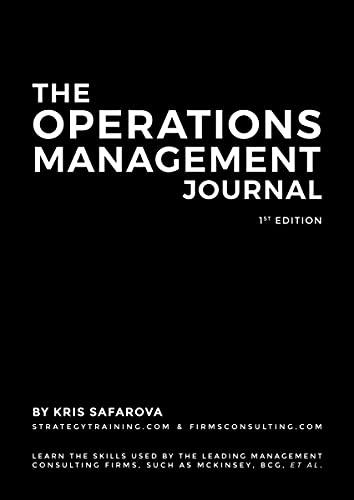Question
Consulting firm Deloitte works with many organizations to improve their business practices. Recently, the firm looked at its own internal processes and determined that its
Consulting firm Deloitte works with many organizations to improve their business practices. Recently, the firm looked at its own internal processes and determined that its performance management system needed some new life. With over 65,000 employees to rate, the goal was to make the process faster, continuous, and simpler. After gathering information on its current practice and investigating the science behind performance evaluation, Deloitte came up with a revolutionary way forward.
The current practice was a traditional method of cascading objectives from the organizational strategic level down to the individual contributor level. Managers would rate each employee at the end of a rating period based on how well he or she met those objectives. However, annual goal-setting did not coincide with business operations schedules, and the process consumed nearly 2 million hours a year. Since Deloitte is in the business of improving efficiencies and productivities for clients, it only made sense to radically change its own performance management system.
The science behind evaluations shows that ratings are often affected by unconscious rater biases and perceptions rather than factual performance outcomes. Deloitte's employees often work in teams, and individuals believe that they are able to use their skills and strengths effectively at work. The firm's new approach asks team leaders to specify what future actions they plan to take regarding each member of the team. This shift in thinking recognizes that raters' assessments of performance may be inaccurate, but the way they plan to work with someone in the future says more about that individual's actual performance.
Team leaders now report their future-oriented intentions, from endorsing that they would like to keep the individual on their team to recommending that the individual poses a performance risk that might endanger client relationships or team performance. Since an essential component of performance management is to facilitate improvements in performance, team leaders now check in with each team member once a week to review project status and priorities, provide feedback on recently completed work, and provide any needed course corrections. This frequent communication is initiated by the team member rather than the leader. In this way, each individual takes ownership of their performance and seeks out feedback and input on their performance. Deloitte has moved away from assigning each employee a single performance rating score in favor of ongoing feedback.
Questions
What type of training would you recommend for managers, team leaders, and team members before switching to a system like this?
Step by Step Solution
There are 3 Steps involved in it
Step: 1

Get Instant Access to Expert-Tailored Solutions
See step-by-step solutions with expert insights and AI powered tools for academic success
Step: 2

Step: 3

Ace Your Homework with AI
Get the answers you need in no time with our AI-driven, step-by-step assistance
Get Started


